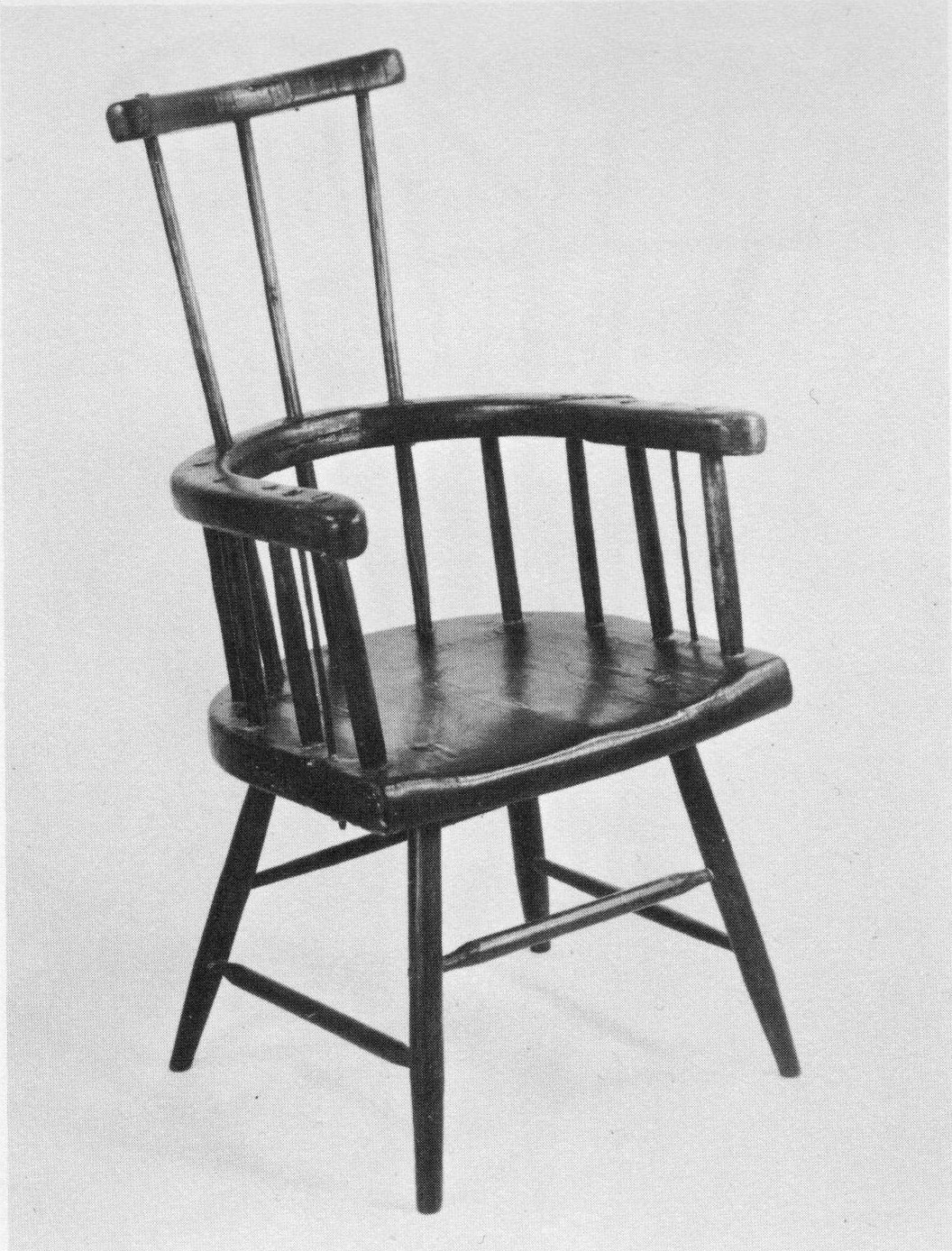
During the last few years I’ve sought out images of vernacular stick chairs from places other than Wales, Ireland and Scotland. Unsurprisingly, stick chairs can usually be found in any place where there was hardship and a strong desire to sit upright.
These chairs are likely user-made. And they are almost always dismissed by furniture historians as “crude,” “rudimentary” or “rough.”
This week I hit the jackpot and found some nice Canadian stick chairs in “The Furniture of Old Ontario” by Philip Shackleton (Macmillan of Canada, 1973). Most of the book celebrates the glossy, curvy, carve-y stuff that makes me feel dead inside. But there are several pages of really good stick chairs.
The captions on the photos mostly discuss how roughly the chairs were built. Or they deliver a backhand compliment such as “Despite the crude qualities of the chair, its elm seat has been shaped somewhat in the saddle tradition.”
Oh well, thanks for the photos. (And thanks to John Porritt – I first found this book in his chair library.)
— Christopher Schwarz









Thanks for sharing these, some very interesting chairs! I am surprised at how similar they look to Welsh and English chairs.
The child’s chair has two holes in the armbow, was it maybe possible to lock the child inside? The child would never fall over with that thick seat, that’s for sure.
The (not so) high back on the red chair with the cat hair on it is an interesting idea that I have to try sometime, I like the very short sticks that don’t go through the armbow.
Do you have any information on the age of these chairs?
Hi Rudy,
The child’s chair was indeed intended to lock the kid in place. All of the chairs are listed in the book as being built between 1800 and 1850 or so.
They must have borrowed the restraint design from New Orleans Mardi Gras ladders. I’m sure the original artist gave credit properly.
I got a chair in the shop and instantly thought of you. It is a Paul McCobb Maple T back dinning chair . My customer has a set of 4 and wants to add this one to the set It was redone with a colored lacquer and needs to match the rest with a clear finish on the Maple. So I used that new scarper I got form you , WOW that thing works Great and it is easy on the thumbs. Anyway back to the chair, Through tenon on the seat and legs and no stretchers or spreaders. A very simple design. At first glance I thought it was a 3 legged chair. Love these old chairs you have found.
Thanks Rachel! McCobb chairs were definitely influenced by vernacular forms. Good eye!
The second example has an almost rudimentary back above the arm rail; the third has an elegant back not matched by the legs; the unusual child’s chair has holes at the hand rest – for a rod or strap to secure the child (not likely for an eating tray), do you suspect the legs were ever cut down? The last chair is an exquisite example! Thanks for all these interesting examples.
Reminds me of those early Australian/ Tasmanian chairs.
Here’s a link to a pdf book with them in.
https://eprints.utas.edu.au/19401/1/Chairs%201978%202.pdf
Thanks for sharing that link, some very nice chairs in there!
Thank you for posting these pics! Nice to see that you are interested in what was done up here in the great white north!
The last chair in the pics is gorgeous-great lines and proportions. What happened to my life? I’m excited about a chair!
I’m partial to that last chair, with the 9 back sticks. The legs are not to my taste, but I wouldn’t kick it off the porch for creaking a bit.
I’m really going to have to think about putting something in that style on the project list…
The Heritage of Upper Canadian Furniture has a spread of 11 stick chairs and stools on pages 128-129. (Upper Canada was an early term for Ontario)
I love that book. My old boss, Steve Shanesy, had a copy and I paged through it quite a lot. Guess I should buy a copy for myself…. Thanks for the reminder.
The Heritage of Upper Canadian Furniture has a spread of 11 stick chairs and stools on pages 128-129. (Upper Canada was an early term for Ontario)..also a couple Windsors on pages 108-109 that would fit in the Welsh stick tradition.
…doh, dumb WordPress login rigamarole…
It’s really great to see these kinds of chairs from our neck of the woods – typically if I were to hear “Canadian Stick Chair” I’d think of something like this:
http://hockeystickbuilds.com/wp-content/gallery/chairgallery/Chair-hockey-stick-corner.JPG